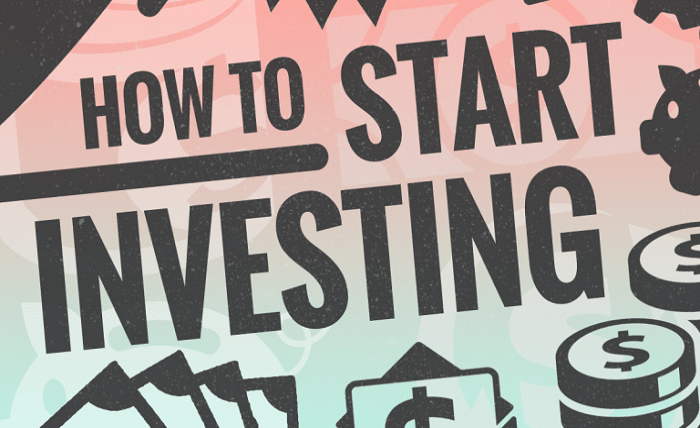How2invest: A Comprehensive Guide to Getting Started

How2invest is a crucial aspect of personal finance that allows individuals to grow their wealth over time. However, for beginners, the world of investing can be overwhelming and complex. This comprehensive guide will provide you with a step-by-step approach to get started with investing and help you navigate the investment landscape with confidence.
Understanding the Basics of Investing
Before diving into the world of investing, it is essential to understand some fundamental concepts.How2invest involves putting money into various assets or financial instruments with the expectation of generating a return. The goal is to make your money work for you and grow over time.
Setting Financial Goals
To begin your investment journey, it is crucial to define your financial goals. Ask yourself what you want to achieve through investing. Do you aim to save for retirement, buy a house, or fund your children’s education? Setting clear goals will help you determine the investment strategies and timeframes that align with your objectives.
Determining Your Risk Tolerance
How2invest inherently involves risk, and different individuals have different levels of tolerance for it. Understanding your risk tolerance is vital in selecting appropriate investment options. Consider your age, financial situation, and comfort level with volatility to determine how much risk you are willing to take on.
Building an Investment Portfolio
Diversification is key to managing risk and optimizing returns. Building a well-rounded investment portfolio involves spreading your investments across different asset classes, such as stocks, bonds, mutual funds, ETFs, and real estate. A balanced portfolio helps protect against market fluctuations and potential losses.
Types of Investment Vehicles
Stocks
Stocks represent shares of ownership in a company. Investing in stocks allows you to participate in the company’s growth and potentially earn dividends. However, stock prices can be volatile, and individual stock selection requires careful analysis.
Bonds
Bonds are debt instruments issued by governments or corporations. When you invest in bonds, you are essentially lending money to the issuer in exchange for regular interest payments and the return of the principal amount at maturity. Bonds are generally considered less risky than stocks.
Mutual Funds
Mutual funds pool money from multiple investors to invest in a diversified portfolio of stocks, bonds, or other assets. They offer professional management and are suitable for those looking for a hands-off investment approach.
Exchange-Traded Funds (ETFs)
ETFs are similar to mutual funds but trade on stock exchanges like individual stocks. They offer diversification and can be bought or sold throughout the trading day at market prices.
Real Estate
How2invest in real estate involves buying properties or investing in real estate investment trusts (REITs). Real estate investments can provide rental income and the potential for property value appreciation.
Choosing the Right Investment Strategy
Investors can adopt different investment strategies based on their goals, risk tolerance, and time commitment.
Passive Investing
Passive investing involves buying and holding a diversified portfolio for the long term. It aims to replicate the performance of a particular market index, such as the S&P 500. Passive investors believe in the efficiency of the market and do not actively trade or time their investments.
Active Investing
ActiveHow2invest involves actively buying and selling investments in an attempt to outperform the market. Active investors analyze market trends, company financials, and other factors to make investment decisions. This strategy requires more time, effort, and expertise.
Conducting Research and Due Diligence
Before making any investment, it is crucial to conduct thorough research and due diligence. Study the companies, assets, or funds you are considering investing in. Analyze their historical performance, financial health, management team, and any potential risks or challenges.
Opening an Investment Account
To start investing, you need to open an investment account with a brokerage firm or financial institution. Research different options, compare fees, account features, and customer reviews before selecting a suitable provider.
Making Your First Investment
Once your investment account is set up, it’s time to make your first investment. Consider your financial goals, risk tolerance, and the information gathered during your research. Begin with a small amount and gradually increase your investments as you gain experience and confidence.
Monitoring and Adjusting Your Portfolio
How2investis an ongoing process that requires regular monitoring. Keep track of your investments’ performance and make adjustments as needed. Rebalance your portfolio periodically to maintain your desired asset allocation and adapt to market conditions.
Understanding Market Volatility
Markets can be volatile, and prices can fluctuate significantly in the short term. It is essential to understand that market ups and downs are a normal part of investing. Avoid making impulsive decisions based on short-term market movements and focus on your long-term goals.
Managing Risk in Investments
Risk management is crucial in investing. Diversification, asset allocation, and regular reviews of your portfolio help mitigate risk. Consider your risk tolerance, time horizon, and investment goals when making decisions.
Tax Considerations in Investing
Investments can have tax implications. Educate yourself on the tax rules and regulations relevant to your investments. Consult with a tax professional to optimize your tax strategy and potentially minimize tax liabilities.
Evaluating Investment Performance
Regularly assess the performance of your investments against your goals. Monitor returns, compare them to relevant benchmarks, and consider the impact of fees and expenses. Adjust your investment strategy if necessary.
Seeking Professional Advice
If you feel overwhelmed or unsure about investing, seek advice from a qualified financial advisor. They can provide personalized guidance based on your unique circumstances and help you make informed investment decisions.
Conclusion
How2invest is a powerful tool for building wealth and achieving financial goals. By following the steps outlined in this comprehensive guide, you can embark on your investment journey with confidence. Remember to start with a clear plan, educate yourself, diversify your portfolio, and stay focused on your long-term objectives.




